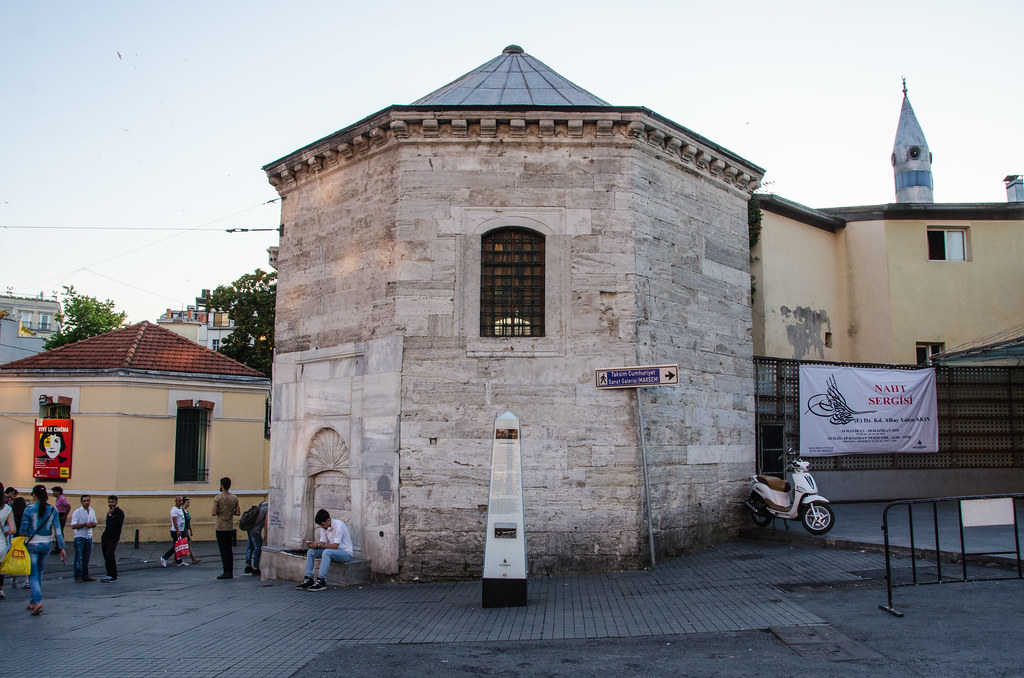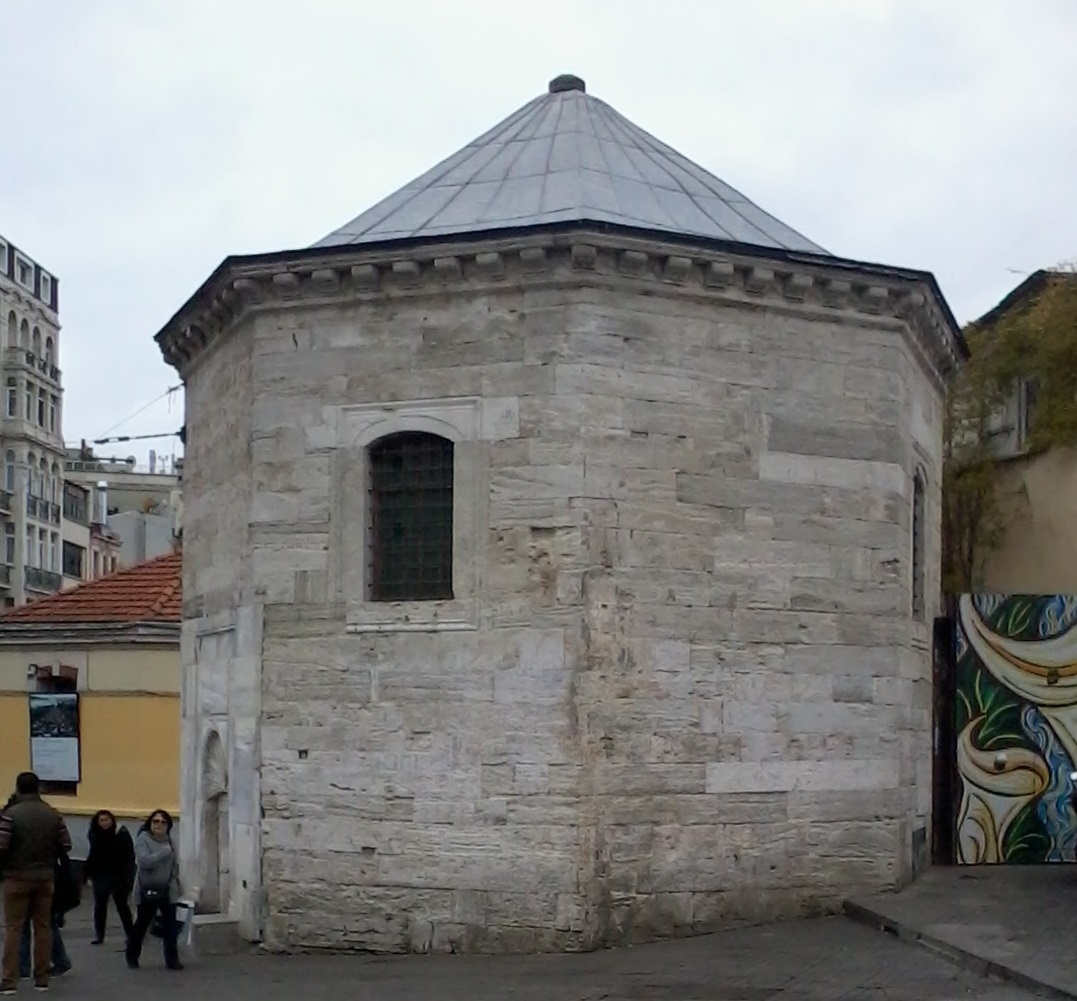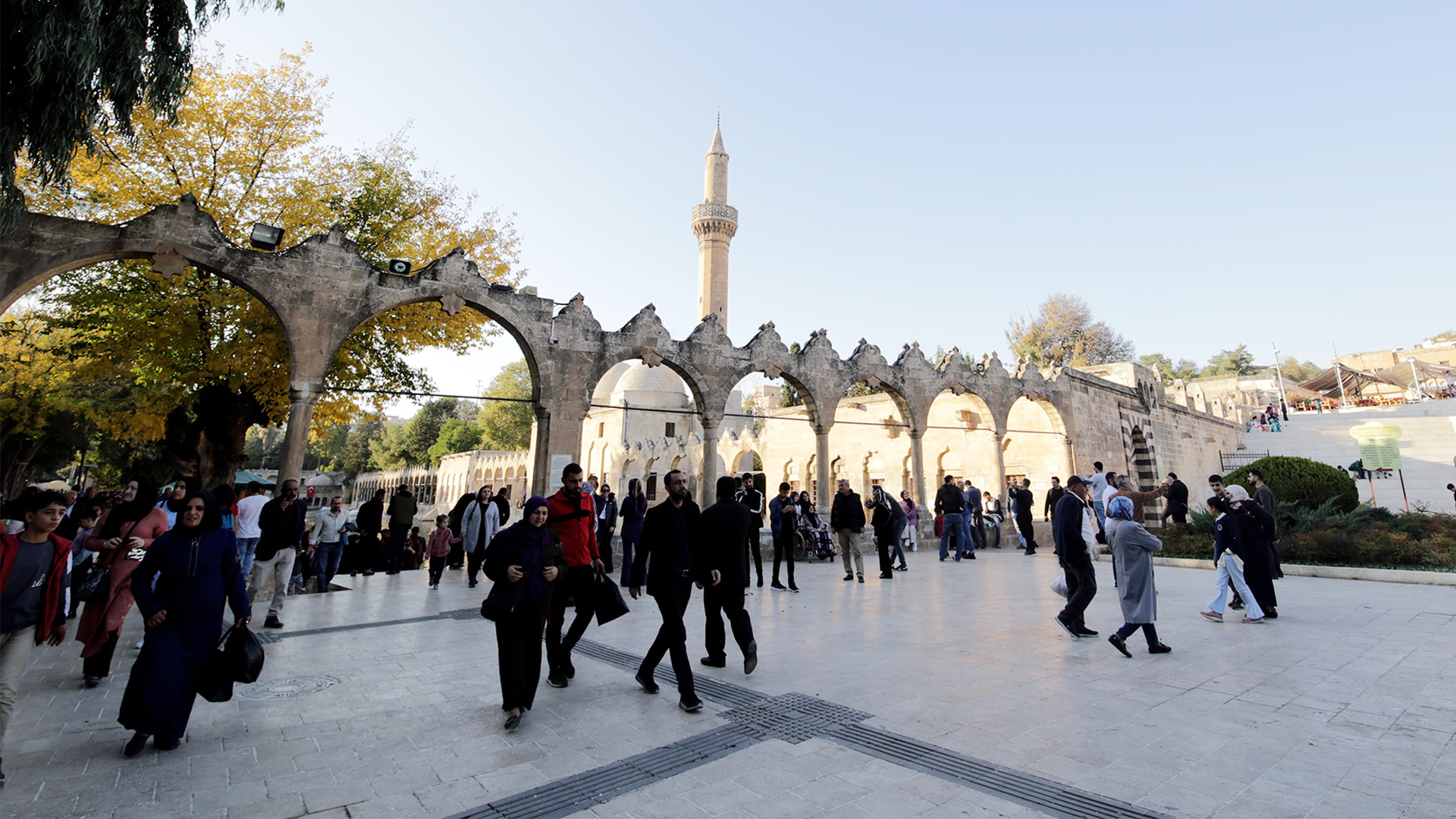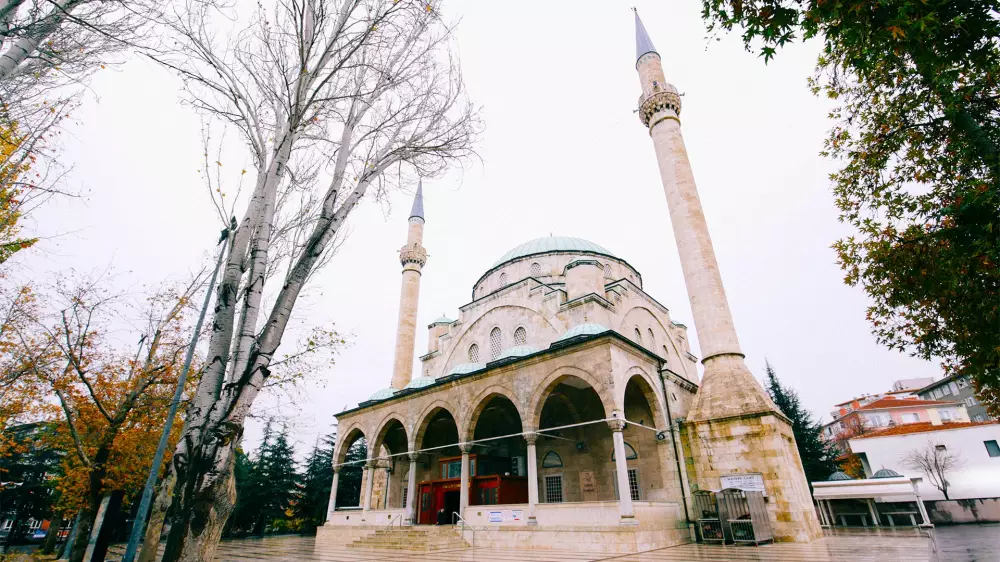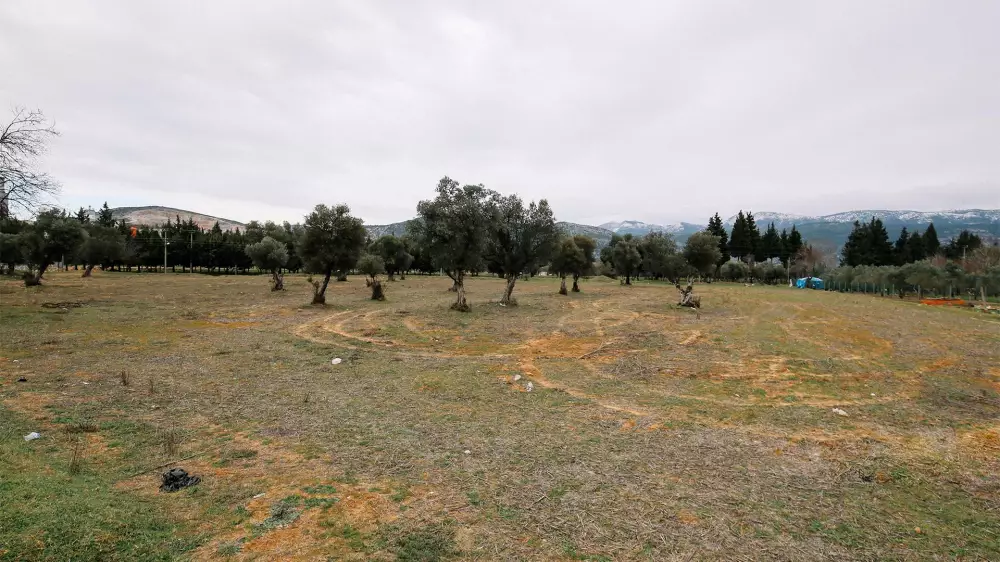
Taksim Maksem
24.09.2024 10:21
Taksim Square is a structure thought to have been built by Mahmut I at the beginning of İstiklal Street in 1732, to distribute water coming from the Bosphorus ridges to the city, and which gave Taksim its name.
Maksems, which are thought to have been used for the first time in history by the Romans, literally mean “the place where water is divided into branches” and were always built as a closed building so that the distributed water would not be polluted.
There are two fountains made of marble overlooking Taksim Square and Street, but although their basins are solid, their water does not flow. Two elegant birdhouses were built from marble on the right and left of its door. Despite the nuances frequently encountered in Ottoman architecture, the fact that a birdhouse was built in this structure in terms of its functionality is actually a great elegance. Inside, there is a marble divan made for important people visiting the maksim to rest. The ceiling is decorated with oil painting embroidery, and there are niches made of pointed arches on each side of the walls. The water coming to the Maksem flows through a channel that protrudes 14 centimeters from the wall, and on this channel there is a one-verse historical poem on carved and gilded marble plaques, and a prose inscription on the right and left.
The Harbiye Maksem, which existed on the Taksim water supply line until recently, was removed due to the opening of the road.
Photo Source:
Gallery
